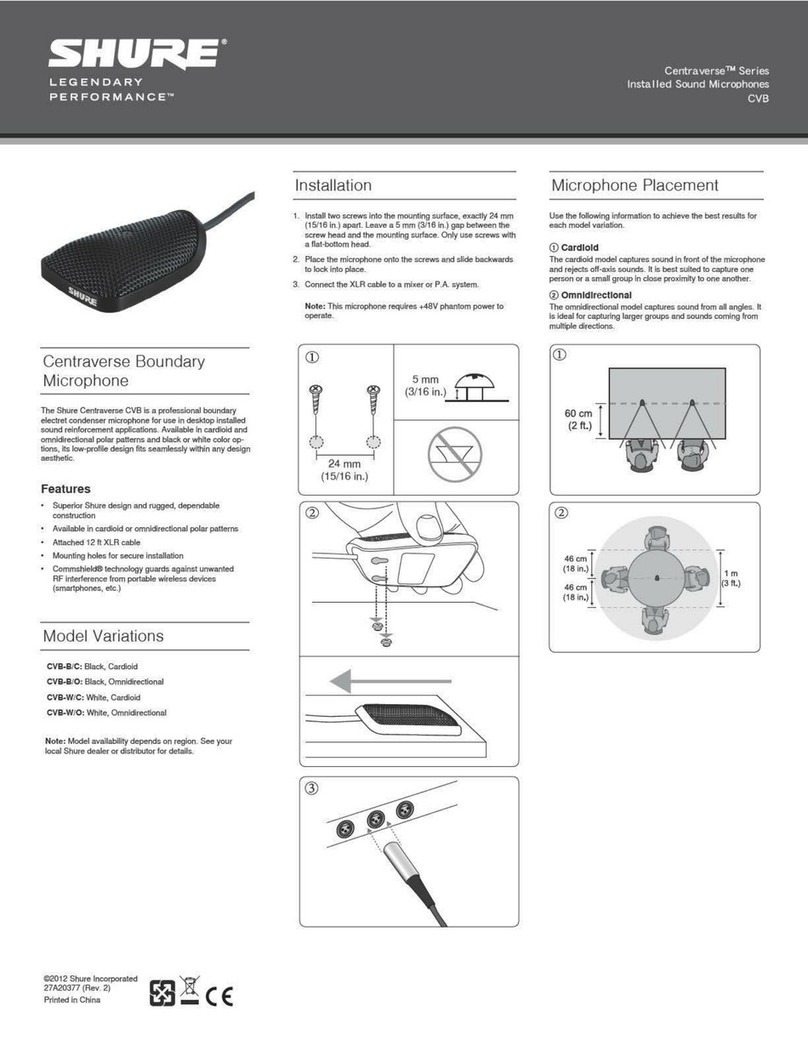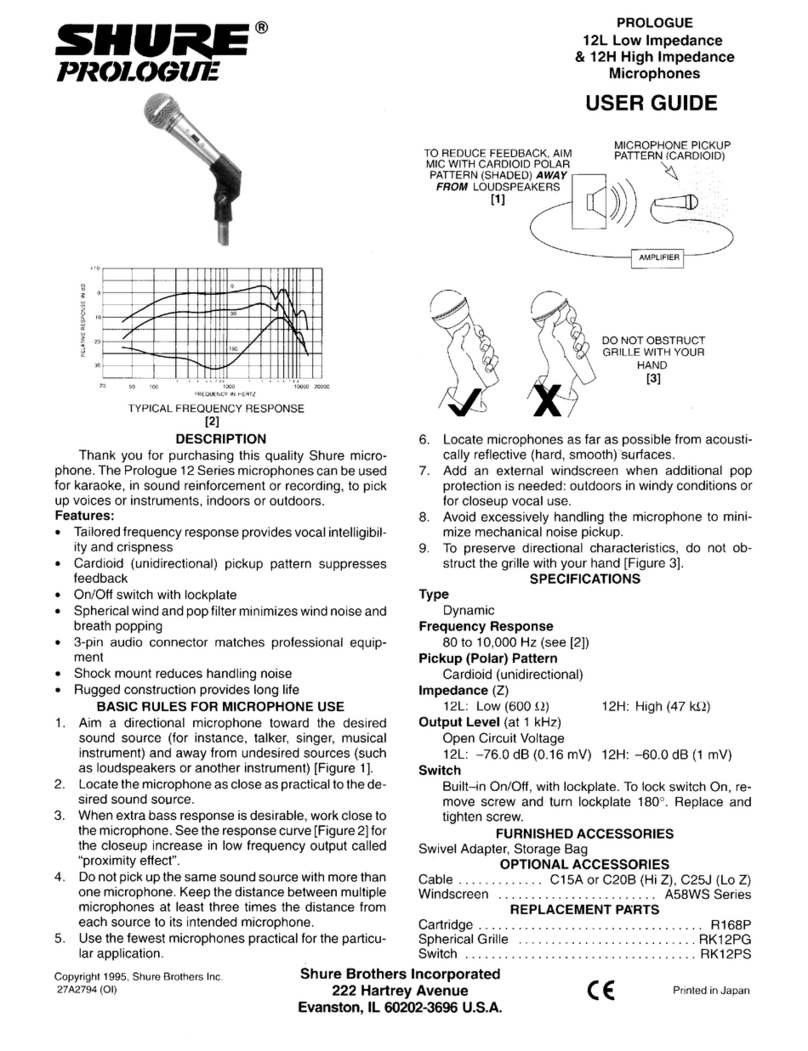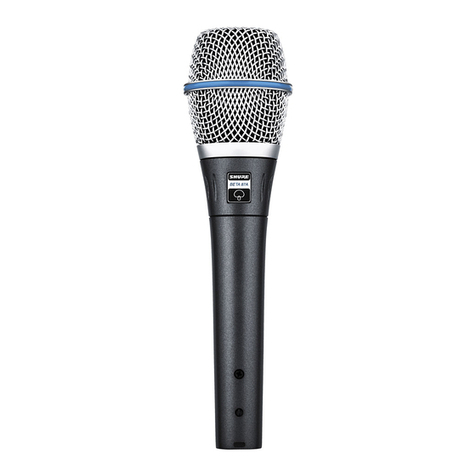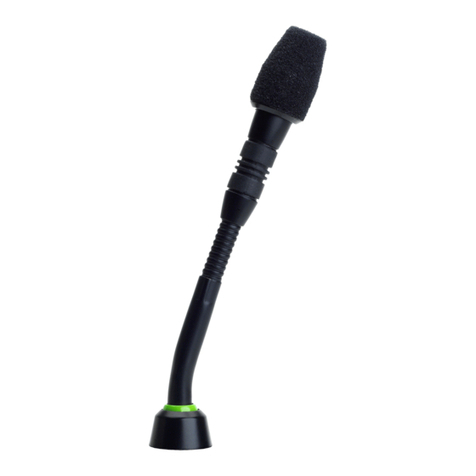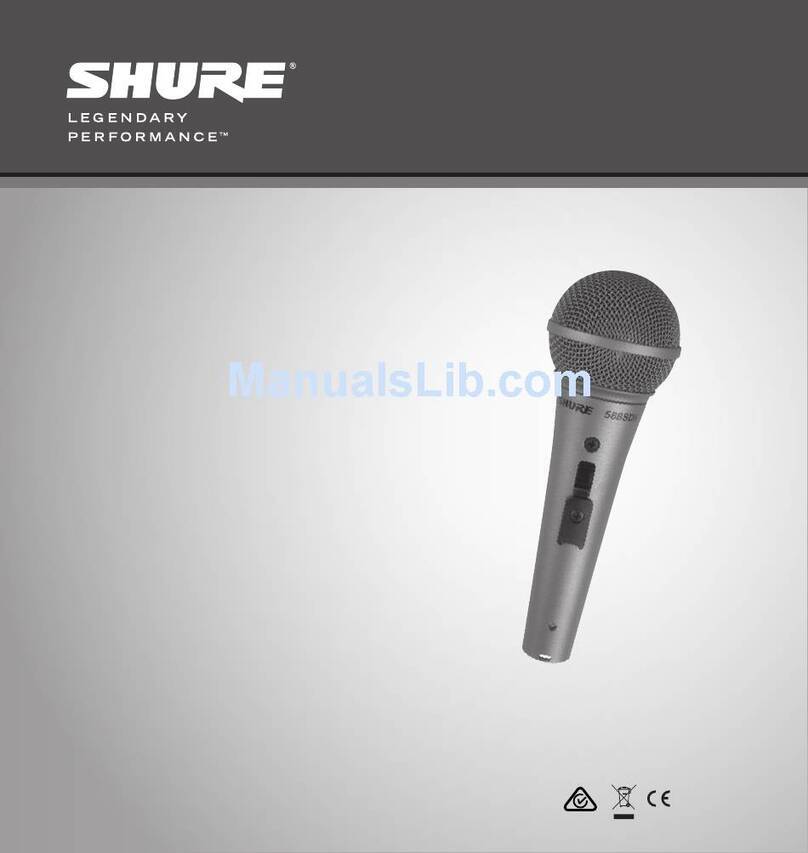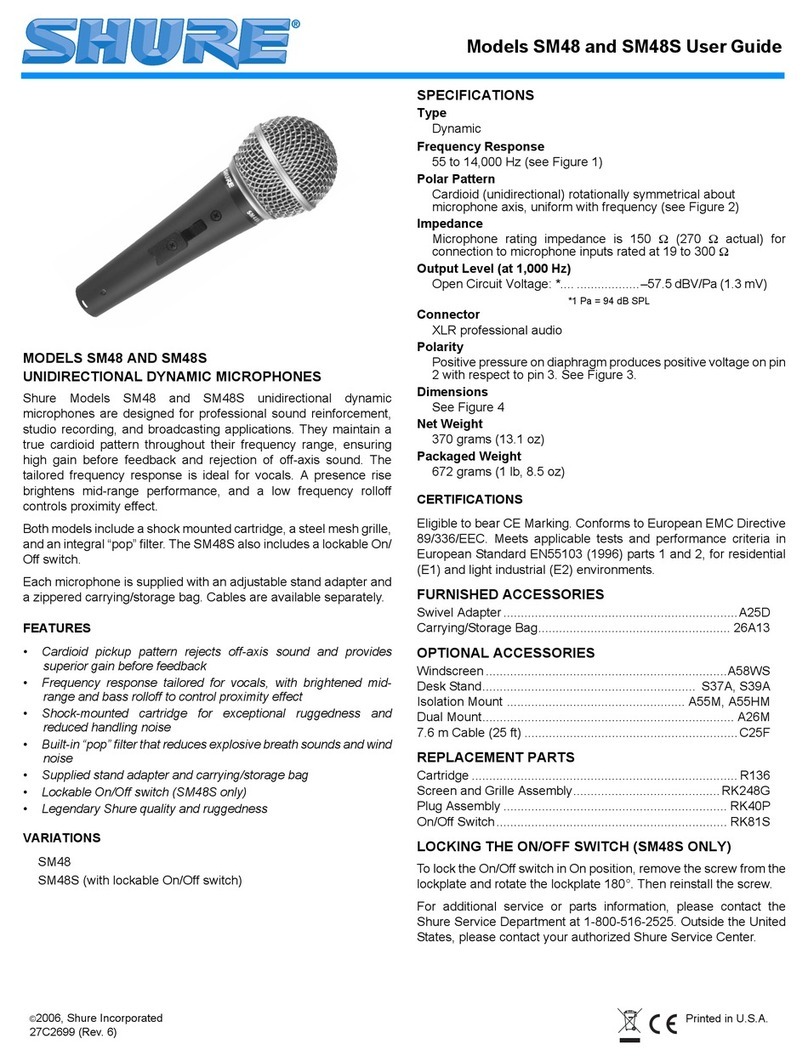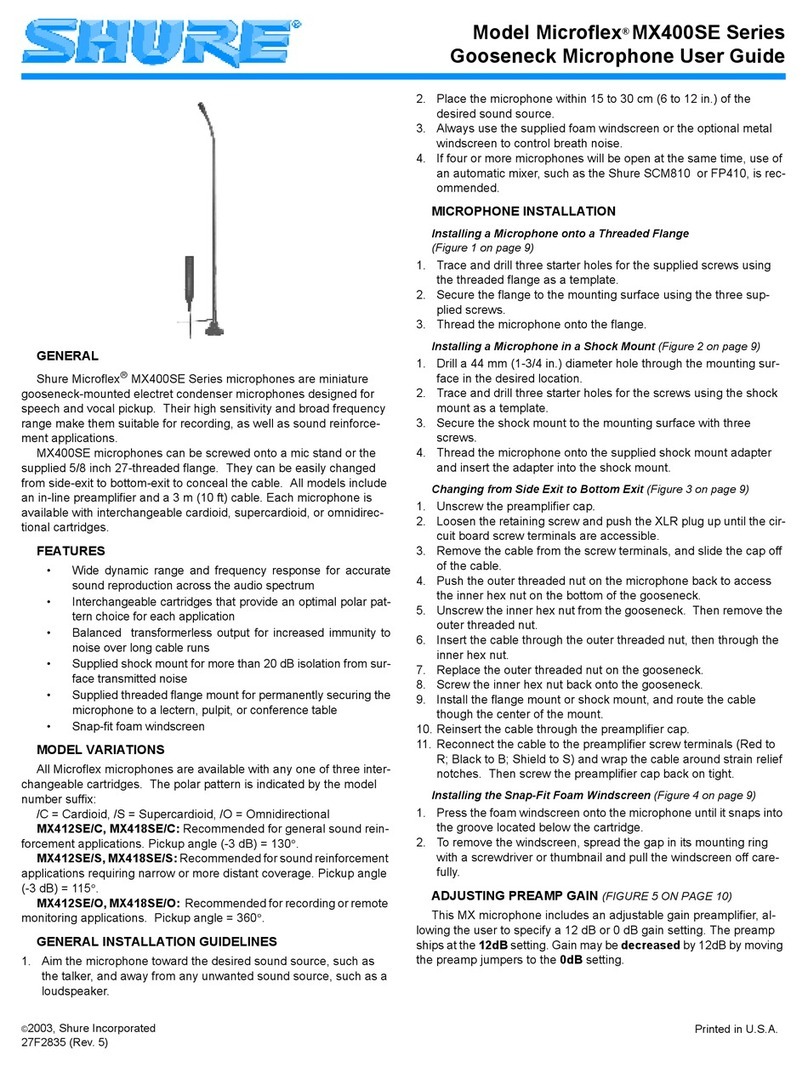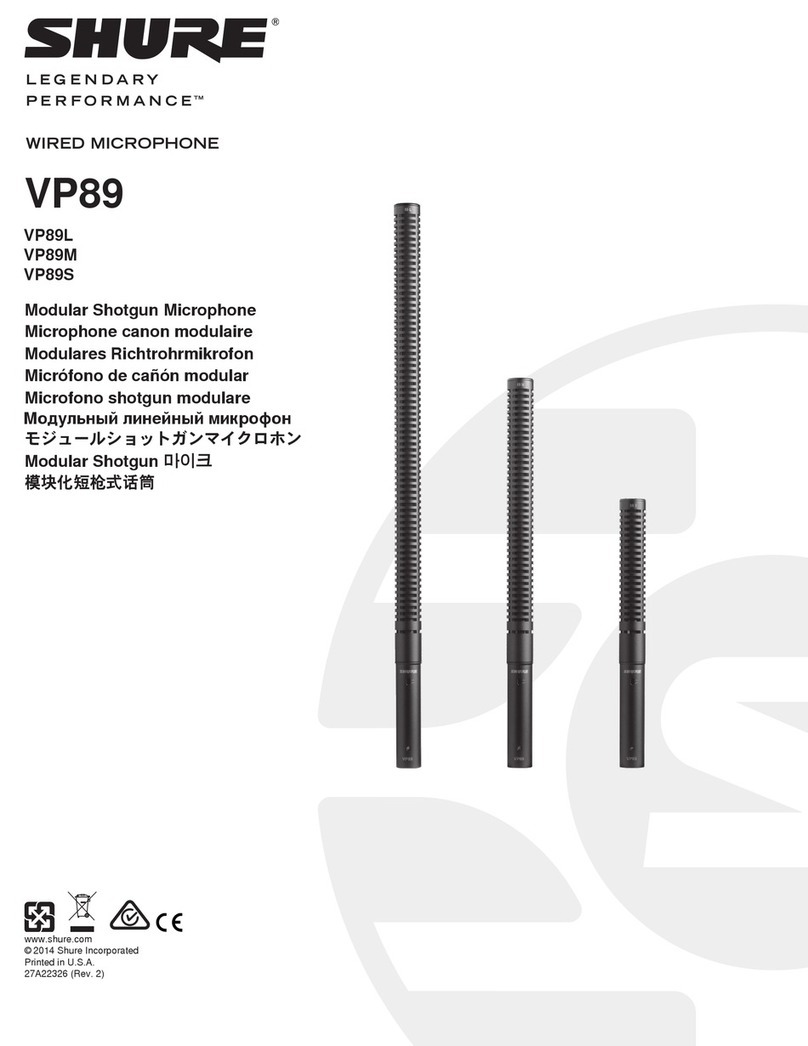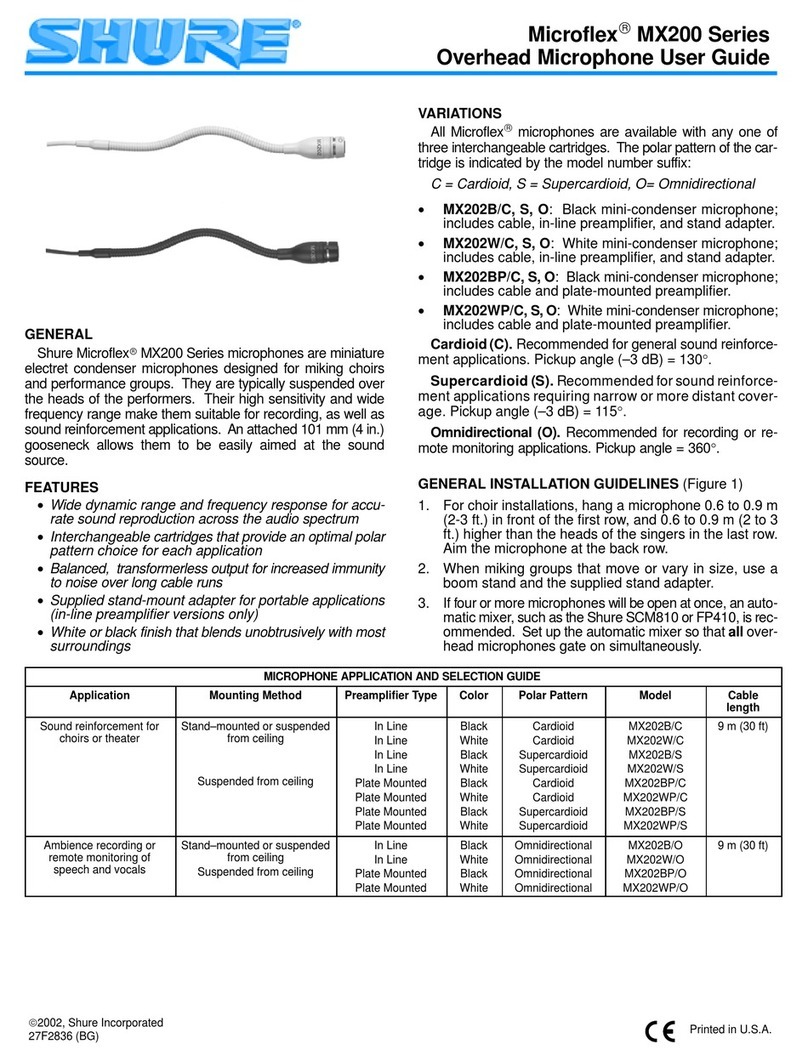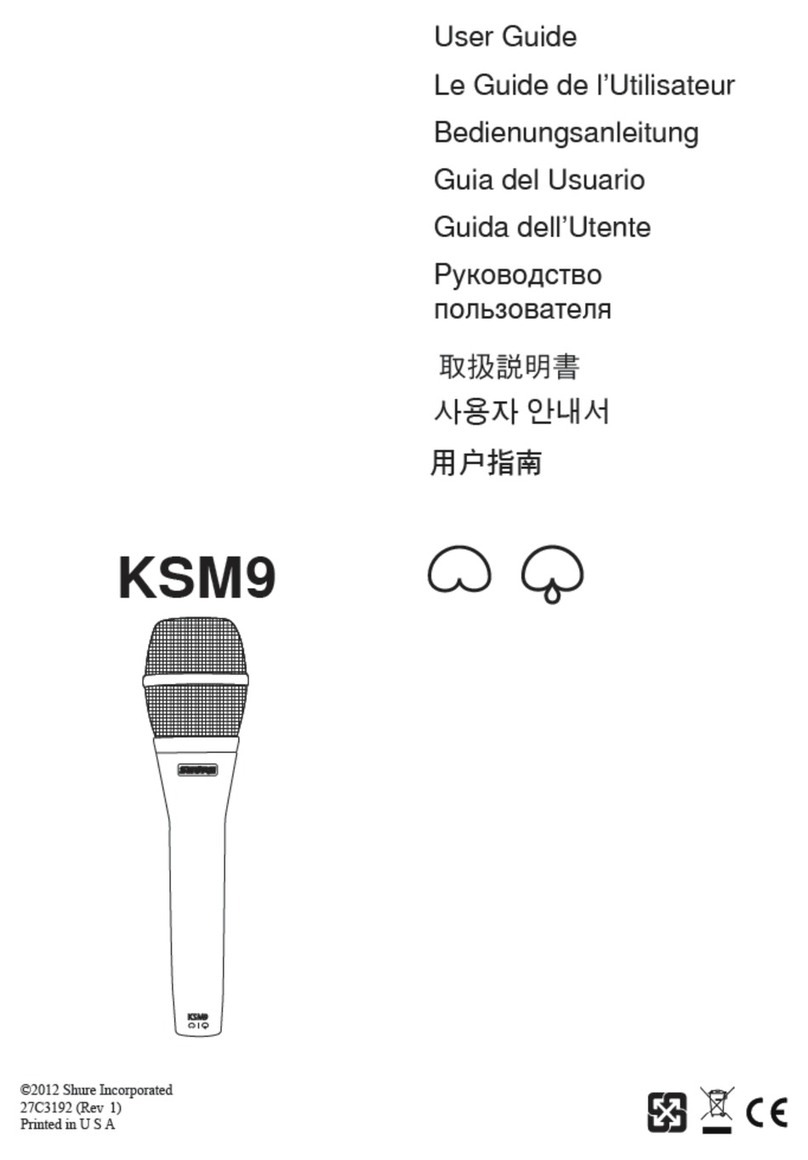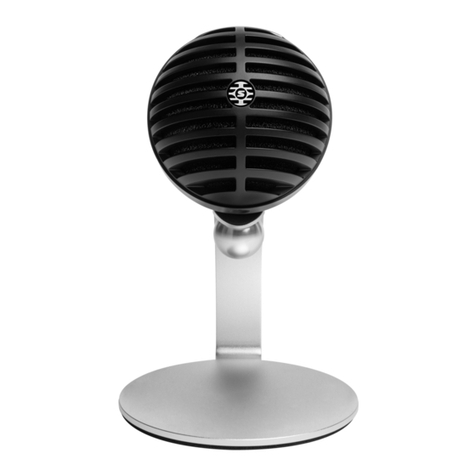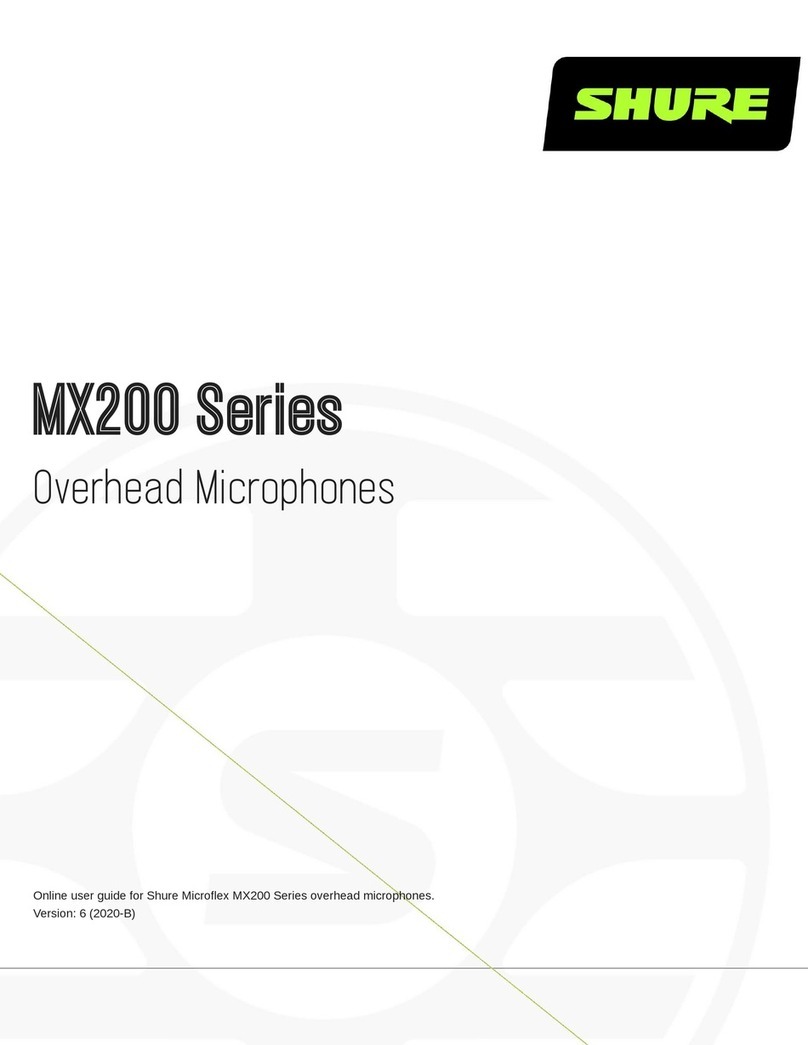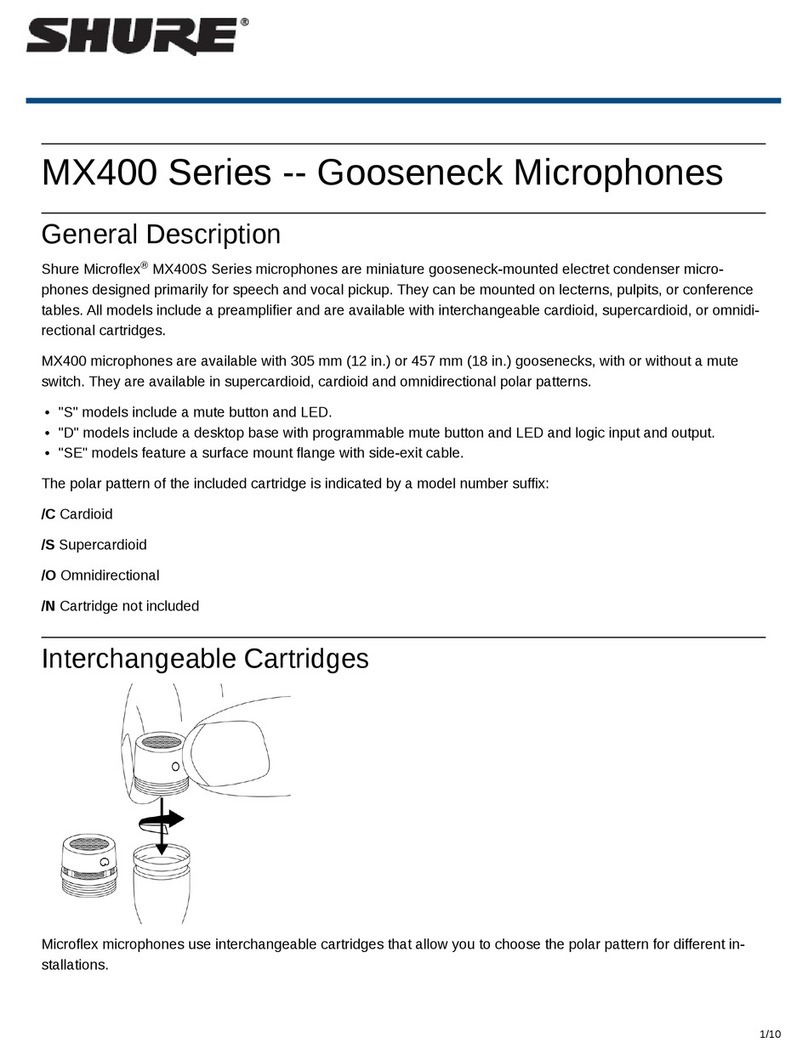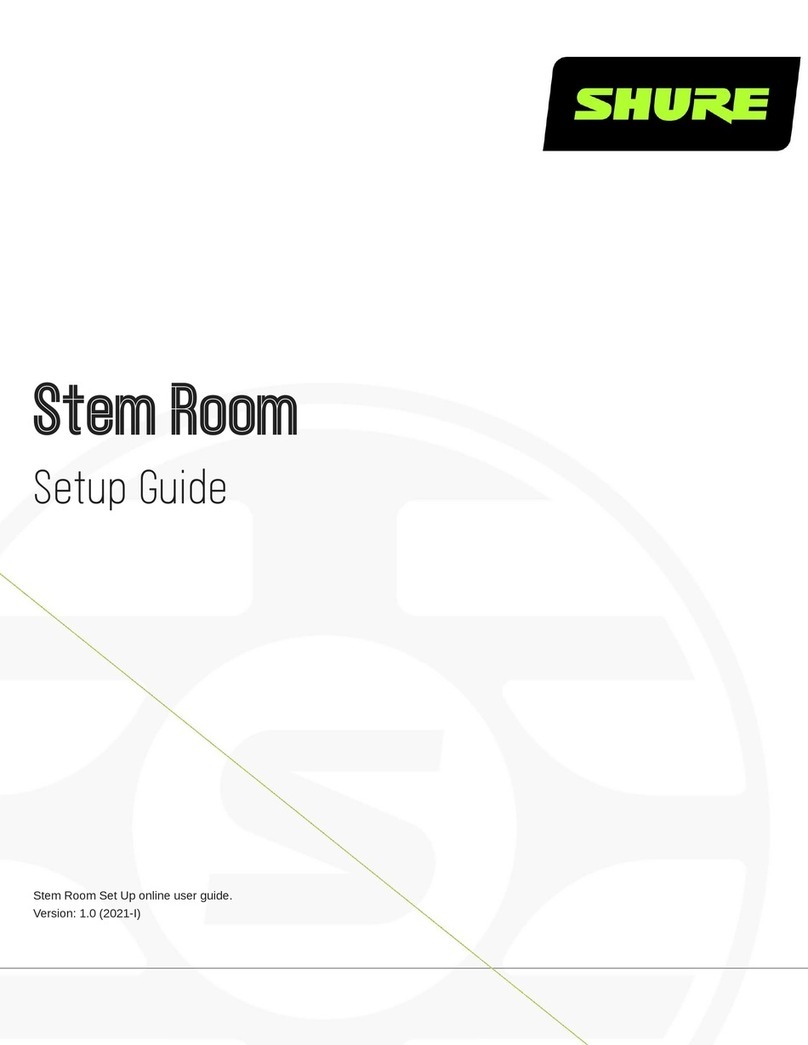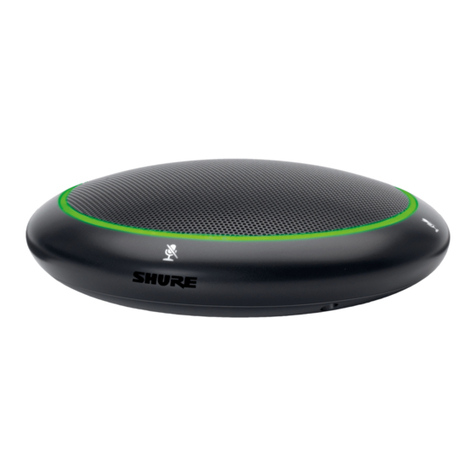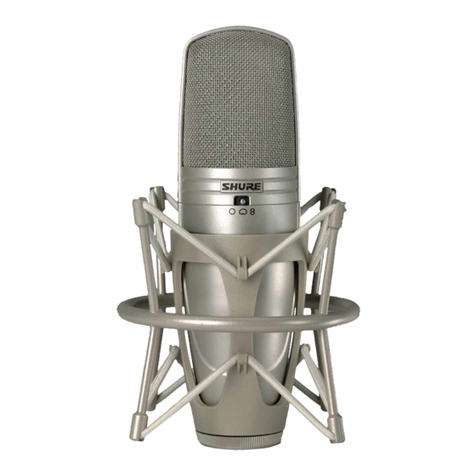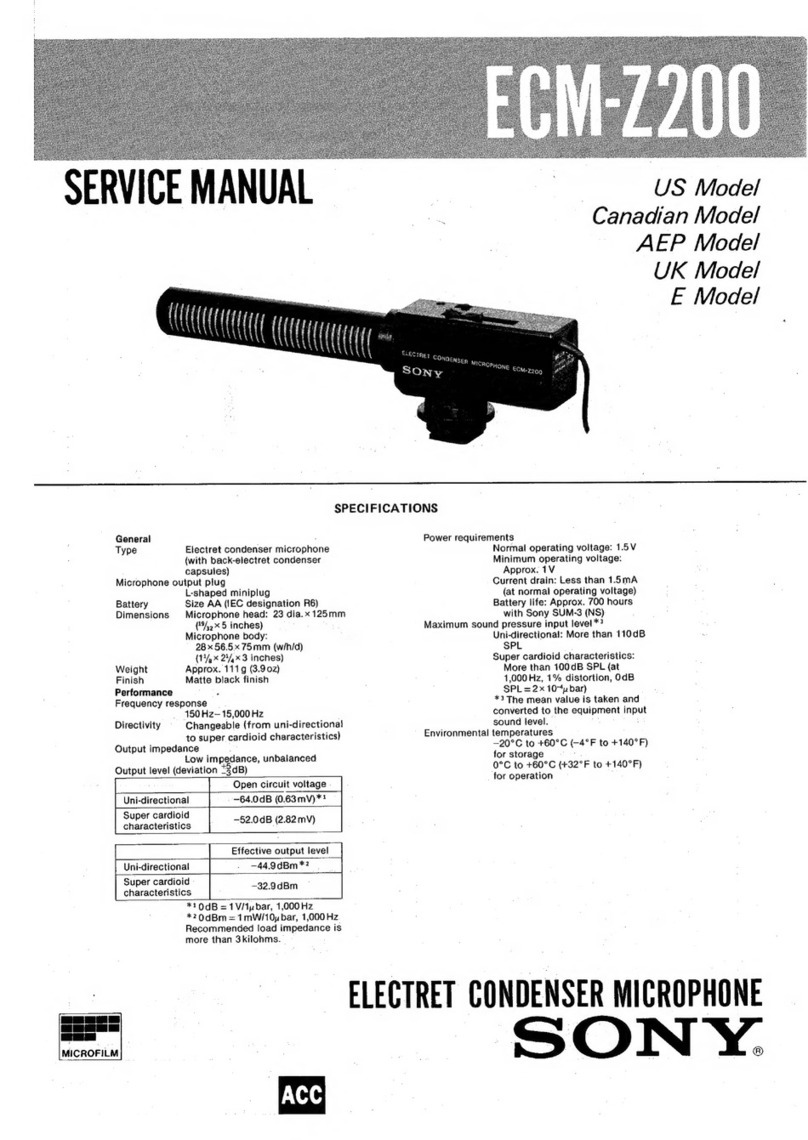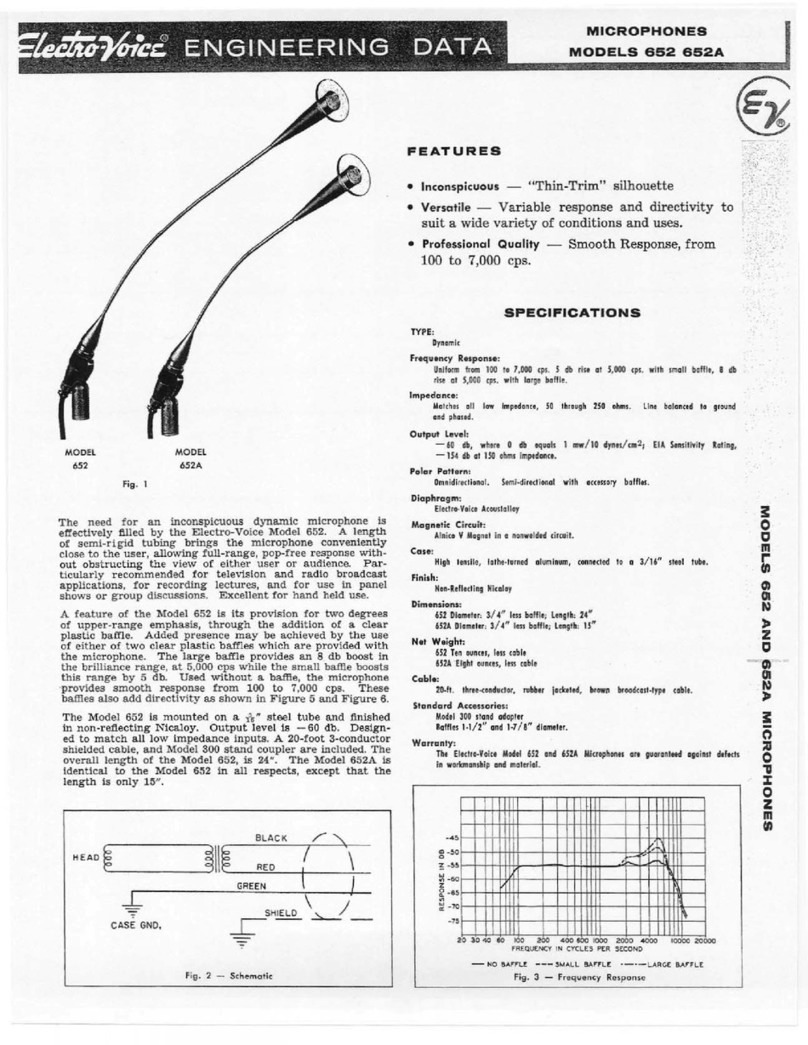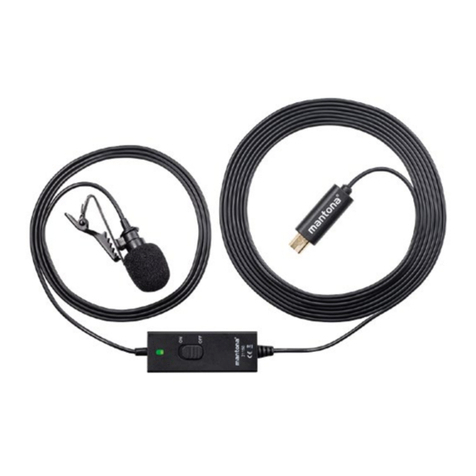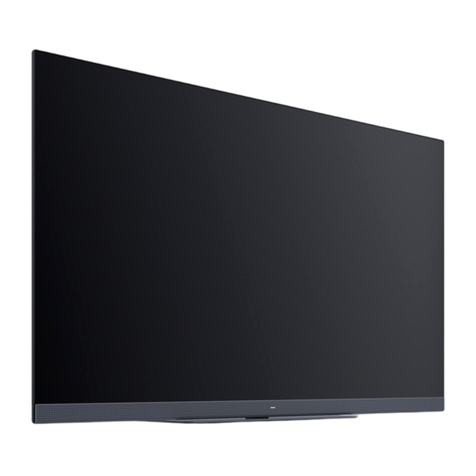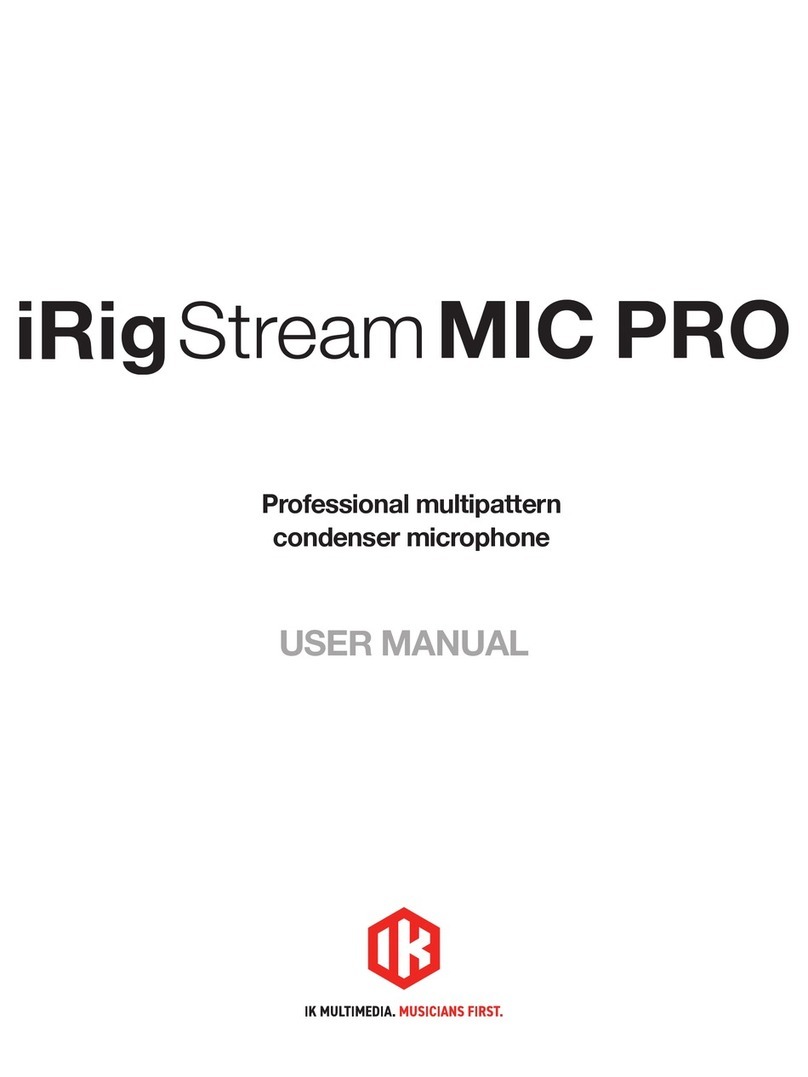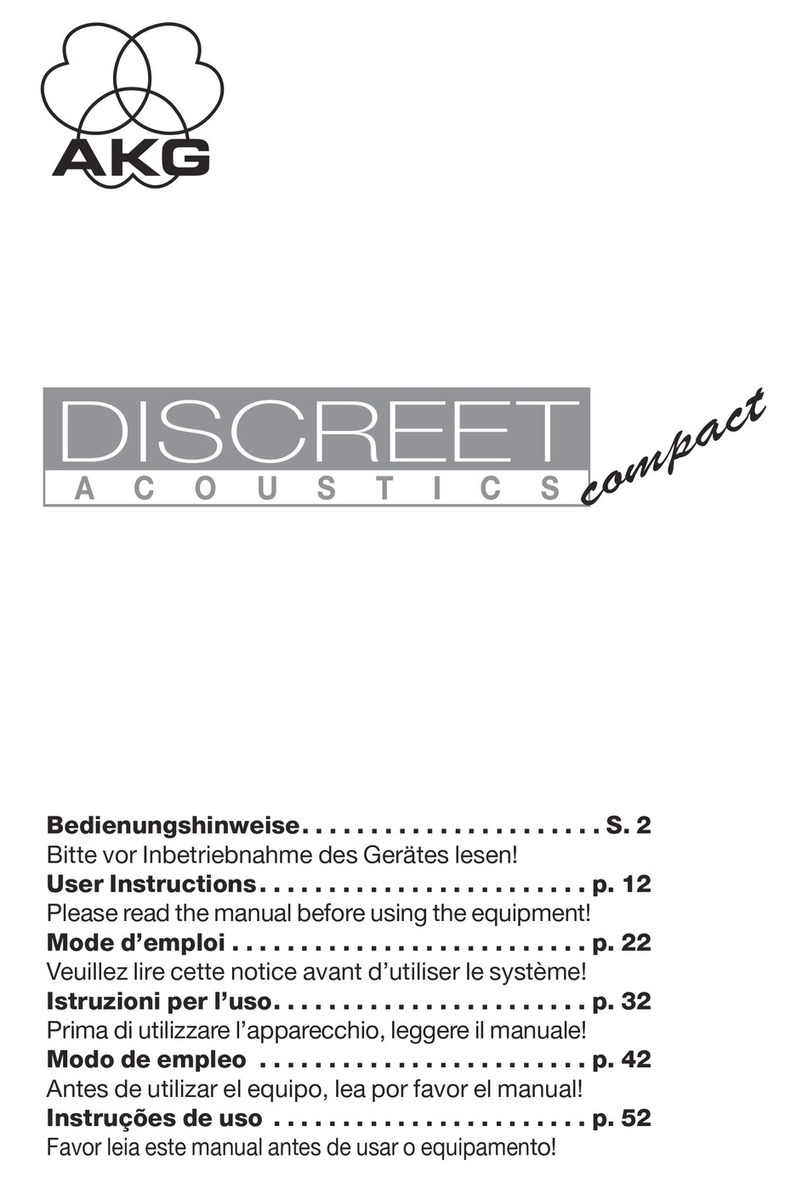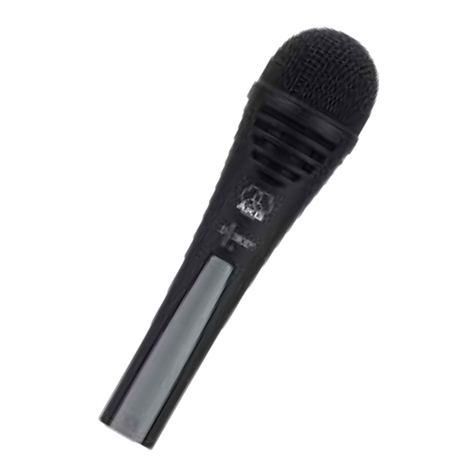8
Use the following information for reference when considering which battery type to use with
output volume levels, and the type of headphones used.
Battery Type (AA) Battery Runtime (Hours)
Passing Audio Only
9.5 10.5
NiMH 15
17.5
Note:
remaining.
Memory Card Requirements
cards in the device prior to recording. Shure recommends using name brand memory cards,
as lower quality or slower memory cards may have a negative effect on performance.
Note: FAT32 file system,
DEFAULT.
Memory Card Recording Capacity
Memory Approximate Recording Time
Troubleshooting
Issue Resolution
Unit does not turn on Replace batteries and make sure that the batteries are installed correctly.
Sound is distorted • Microphone gain may be set too high, resulting in clipping. Try lowering the gain.
•
•
No sound • If the audio meter doesn’t register a signal, try increasing the microphone gain.
• If the audio meter indicates a signal, check the headphone output level and the headphone connection.
•
Sound is not being recorded • Ensure the MicroSD memory card is installed correctly.
• Try formatting the card in the device and ensure the memory card meets listed requirements. Use a new memory card if problem persists.
Use a memory card with a higher speed class rating or a different brand
Notification screen: SD CARD ERROR
Notification screen: SET TIME/DATE?
Note:
not affect any other functionality of the device.
Notification screen:
• BATTERY LOW CANNOT FORMAT
• BATTERY LOW CANNOT UPDATE
Formatting the memory card and updating the firmware cannot be done when the battery is low. To perform these functions, install a new battery.
Notification screen: WAV FILE ERROR The .wav
.wav files to a computer if they are not backed up and remove them from the memory card.
Camera and Headphone Output Pin
The camera and headphone outputs send identical,
mono audio signals on the tip and ring portions of
typically use the tip as the left channel and the ring
as the right channel, receive the same audio on both
channels.
Tip Ring Sleeve
Accessories and Replacement Parts
Rycote® replacement foam windscreen
Rycote®
